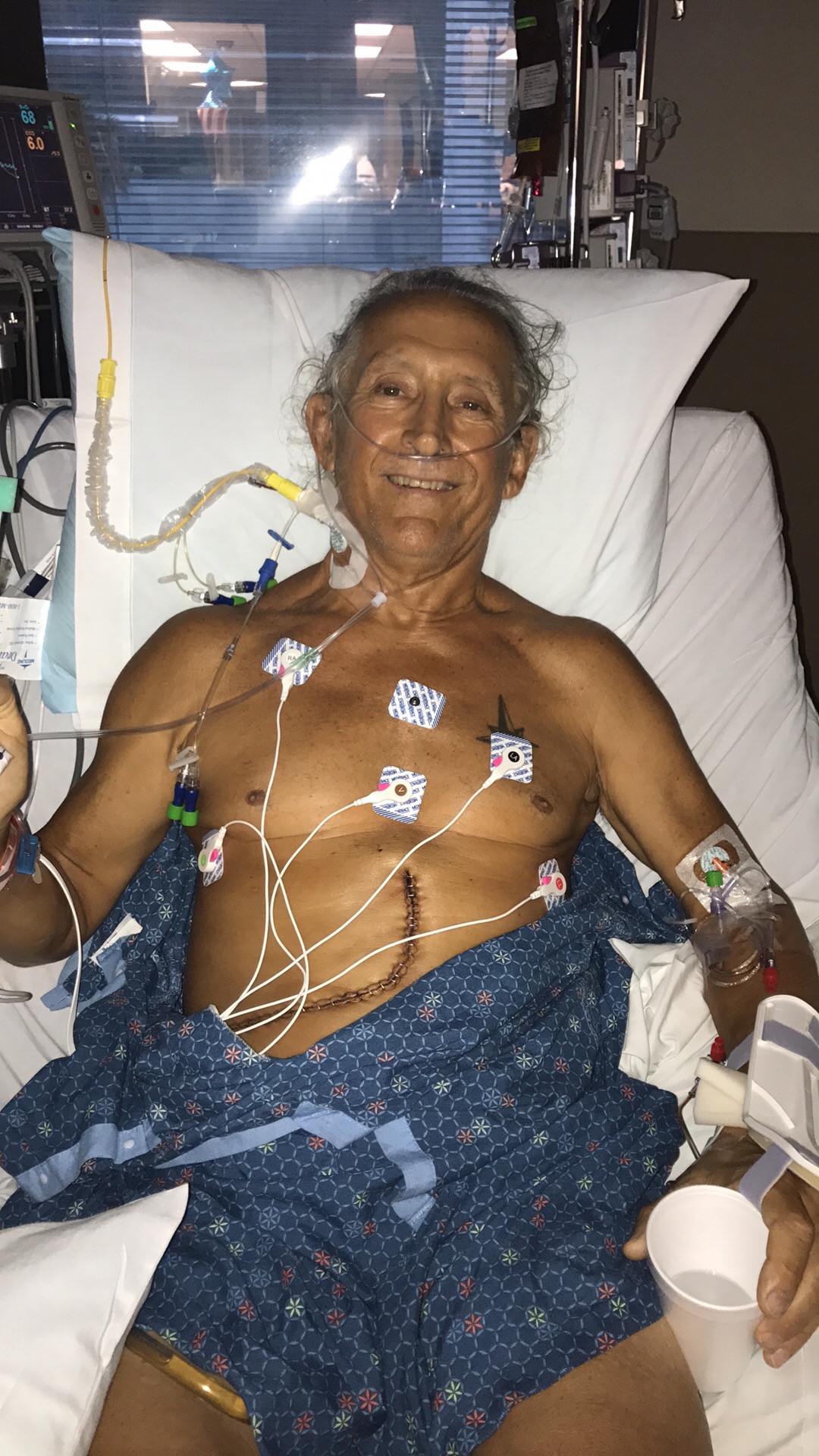A little thing like a liver transplant hasn’t slowed down Tom Stokes. In fact, it might have made him more competitive. The 69-year-old runner, cyclist and swimmer received the life-saving transplant thirteen months ago and was back competing at races a month later.
Diagnosed with Hepatitis C in the 80’s, the Melbourne resident took up running with his wife, Deb in 1999. The couple have run and raced many miles together. It was a good, healthy lifestyle and one that the active couple truly enjoyed. After an ultrasound came back suspicious in April 2015 at his annual evaluation, Stokes was diagnosed with liver cancer, a complication of his hepatitis C.
Stokes’ need for a transplant was apparent. As a retired nurse who had worked in the hospital setting, Stokes knew it was time to step up his level of physical activity. He had seen firsthand how patients in better shape had better outcomes in surgery. He began to increase his running and began to cross train on the bike and added swim workouts in the pool. He participated in his first triathlon, Rocket Man that November.
Tom was placed on the liver transplant list in May 2017. It took almost 2 years to get listed from the initial cancer diagnosis. Florida Hospital would do the transplant when a liver became available. He had the opportunity to take a high-risk donor liver right off the bat but considering the good shape he was in, Tom turned it down. An organ is considered high risk if the donor recently injected drugs, as well those who were incarcerated or had sex for drugs or money.
On July 8, 2017, Tom went to Clermont to do a sprint triathlon. He had his hospital bag packed and with him in case he got the call. Deb was out of town. At 10:30pm that night, he received the call and was told to come right away. After the wait, all the meetings with case workers and surgeons to discuss the surgery and prepare Tom to be an organ recipient, the time had come. His liver had arrived.
“I’m doing this for you”, Tom would tell his surgeon, Dr. Chin. “When you go in there, make the cut and step back to admire how nice it is in there.” The surgery went off without a hitch.

In recovery Tom was told he could try to get up and walk a lap around the department. Being the competitor that he is, Tom asked what the record was for laps. The answer was 26 laps. On his third day post-surgery, Tom did 40 laps. On this 4th day, he went outside and walked a mile. Typical organ recipients go home 7-10 days later. Tom was discharged in 5 days.
It wasn’t long before Tom was getting back a routine. With his doctor’s approval he could walk. No weights. No swimming. He started by walking the dog. On August 1 he made it 7/10ths of a mile and crawled home feeling really sorry for himself. In his mind, his biggest fear was that he wouldn’t be able to get back to the active lifestyle that he had shared for 20+ years with Deb. So he signed up for the Tailgate 2 Miler and he did it. He ran the whole thing. It was a recovery highlight.
Stokes kept going and decided to take part in the SCR Runner of the Year Series. He started biking again. He was healing well. The discomfort and nausea from all the anti-rejection and anti-viral medications were minimal. At 3 months post-surgery the doctors started lessening the medications. In October, he was cleared for swimming in the river and lakes.
He was building the miles on the road and bike but was frustrated by his lack of speed. Fellow Strava members offered helpful advice when lamented about it. More highlights were to come. At four months into his recovery Tom did a metric century ride and followed that up with the Space Coast Half Marathon.
It hasn’t been all so easy. The night before the Excalibur 10 Miler this past March, Tom started getting itchy. He monthly blood labs came back out of whack. An MRI revealed a stricture where the bile ducts meet from the donor liver. A stent was needed. Tom negotiated with his doctor so that he was able to do the race and then have the procedure.
Moving forward, Stokes completed an Ironman Half on the 10-month anniversary of the transplant. The Fort De Soto Triathlon was next. And last month, a mere 13-months later Tom competed in The Transplant Games of America, a multi-sport festival event for individuals who have undergone life-saving transplant surgeries.
With more goals on his list to accomplish, Stokes hopes his story of determination will help to inspire other transplant patients as well as the need for organ donors. You’ll see him at the local races and now you know the story behind the “Donate Life” singlet Tom sports.
“It’s been an emotional ride that makes the physical discomfort more bearable.” For more information on how to become an organ donor, visit Donate Life at https://www.donatelife.net/.